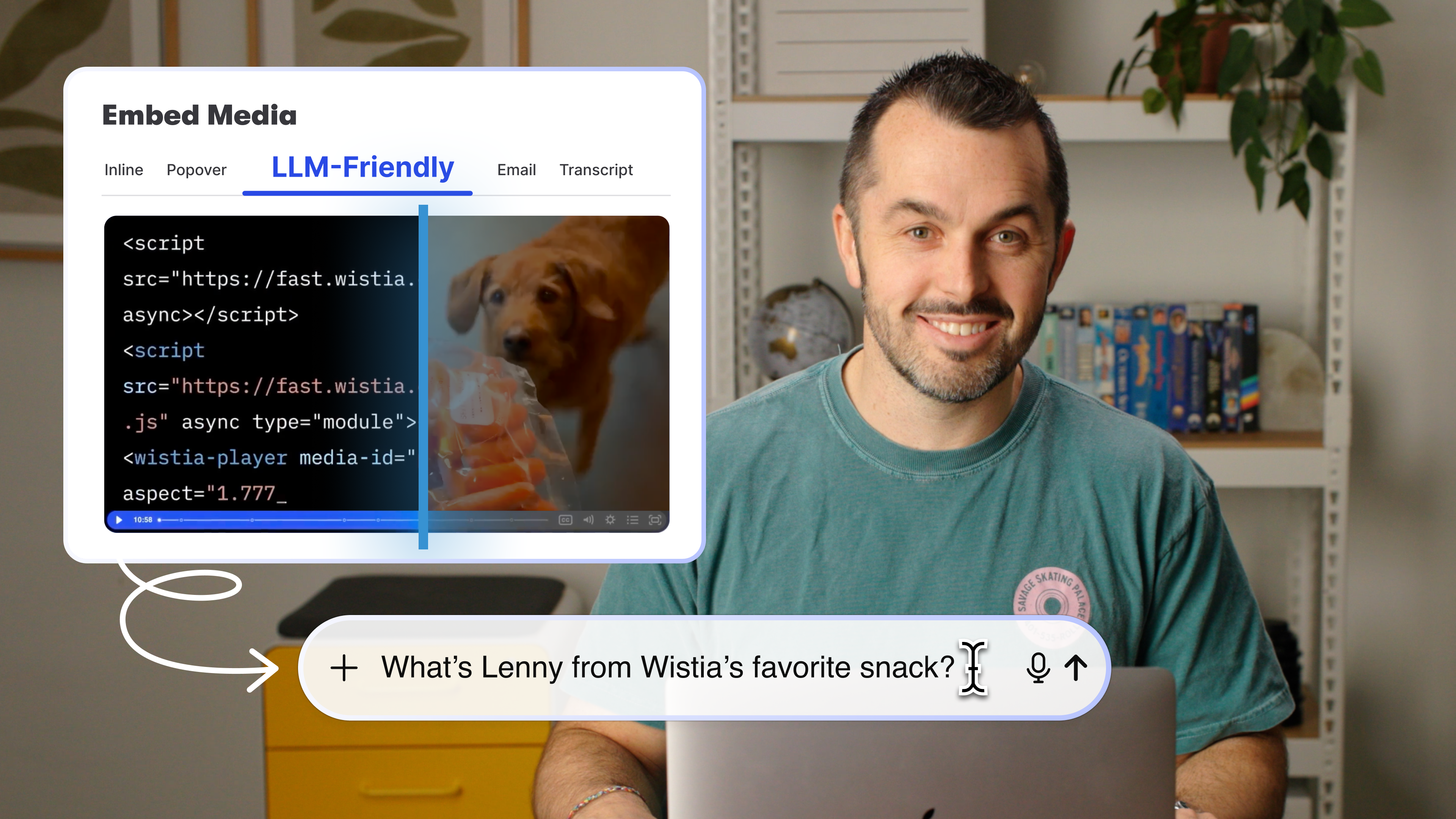Why We’re Giving All New Parents 16 Weeks of Paid Leave
September 25, 2019
Last month, at an all-hands meeting, we announced that we were going to extend our parental leave policy at Wistia to 16 weeks for all new parents, eliminating the distinction between “primary” and “secondary” caregivers that we previously had in our policy.
Making our parental leave policy more generous and supportive was something we’ve been striving to do, bit by bit, since we first created it almost a decade ago. This change, along with not distinguishing among birth, adoptive, or foster parents, makes our leave policy more inclusive and in line with our values — and it’s an incredibly proud moment for us.
Getting rid of the “primary” and “secondary” caregiver distinction
A lot of companies give mothers and fathers different amounts of time off after the birth of a child. Some differentiate between the child’s “primary” and “secondary” caregiver — as we did before this recent change. This is supposed to distribute leave according to who will, in theory, be spending the most time with the baby during its first few months. In reality, it imposes a model of childcare that doesn’t align with how many people choose to parent. And more importantly, it perpetuates our society’s bias around parental responsibilities.
“In reality, it imposes a model of childcare that doesn’t align with how many people choose to parent.”
According to a study from the national paid-leave advocacy group PL+US, while most fathers intend on taking some leave from work, 33% hold a strong fear that their career will be damaged when they do. As a result, less than half of all new fathers actually end up taking leave. But the point here isn’t just to give men more time off — in the end, an equal leave policy most likely benefits women the most.
When you specifically give mothers more parental leave time than men, studies show they tend to struggle more in the workplace, getting passed over for more senior positions. In 2014, the World Economic Forum released a report showing that the best performing countries economically tended to also be the ones doing the best job of furthering womens’ careers, keeping women in the workplace after having children, and closing the pay gap between genders.
In these countries, it wasn’t the length of maternity leave that was the key differentiator — it was the presence of paternity leave. Not only did it make men more active when it came to housework and child care, it also brought women back to the workplace sooner, and with better outcomes.
The more we thought about this, the more we understood that thinking in terms of “primary” and “secondary” caregivers didn’t align with reality, Wistia’s values, and the kind of ideals we wanted to promote. This message that we got from Vince, an engineer on our team who just welcomed his son Leo after the policy change was announced, captures the spirit of our new policy really well:
“I recently found out that I’d be getting 16 instead of 4 weeks of parental leave. What a wonderful surprise! I think dropping the primary/non-primary caregiver distinction is a great move. Speaking from experience, my kids don’t have a “primary caregiver” and “non-primary caregiver” — they have two parents, both of whom love and take care of them. Sometimes one of us has to work, and sometimes the other does. A nice long leave gives Becky and me time to equally share all of the joys and burdens of caring for Leo and his older brothers and sisters.”
Take your time when you need it
In our new parental leave policy, parents can also use their time on the schedule that works for them. We’ve learned over the years that not everyone wants to take parental leave the same way and at the same time, and having flexibility is really important.
Some ways we can see our leave being used:
- Take all your leave time at once after your child comes home with you.
- Stay at work until your partner returns to their job, then take all your leave time at once.
- Spend your first weeks or months with your child and partner, then return to work, and then take the remainder of leave when your partner returns to their job.
- Take a few weeks off before your child comes home with you, then use the remainder of your leave once they’ve arrived.
- Take the first three months of leave after your child comes home, then use the remainder of the leave to slowly transition back into work on a part-time schedule.
“We’ve learned over the years that not everyone wants to take parental leave the same way and at the same time, and having flexibility is really important.”
As a small business, the prospect of one of your team members being out of the office for several months is daunting, especially when things are often stretched to the limit as it is. But over the years, we’ve never had a case where someone being out on parental leave actually held the business back; we just perceived that it would. Each time, other team members stepped up, the work got done, and the months passed before we knew it.
Our team is a little over 100 people — not a big company by any stretch — and we’re now providing a benefit that’s typically only available at the largest and most successful companies in the U.S. The barrier to companies adopting longer, inclusive, and more supportive parental leave policies is not economic, it’s psychological — a hangover from a time when it was assumed that women raise the kids while men work.
And when we do some honest self-reflection about our own company, it’s clear we should have made this change years ago.






